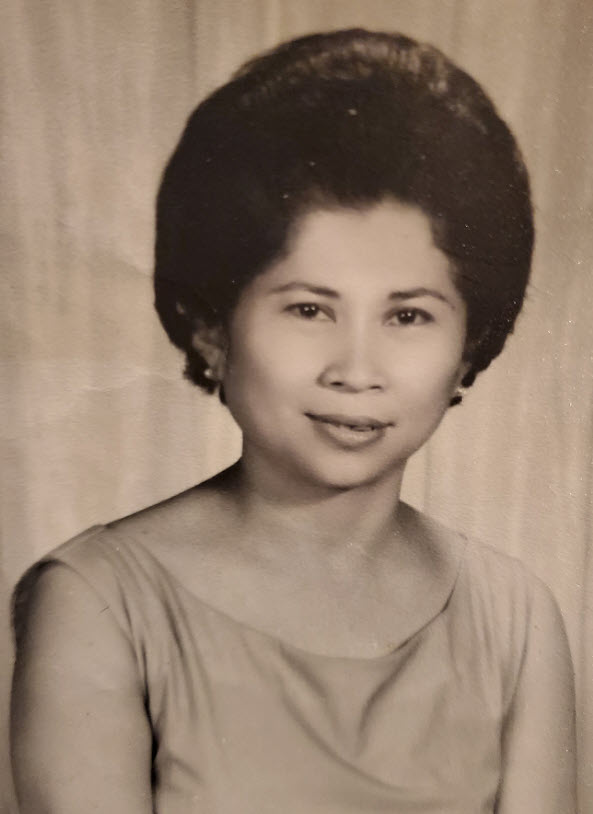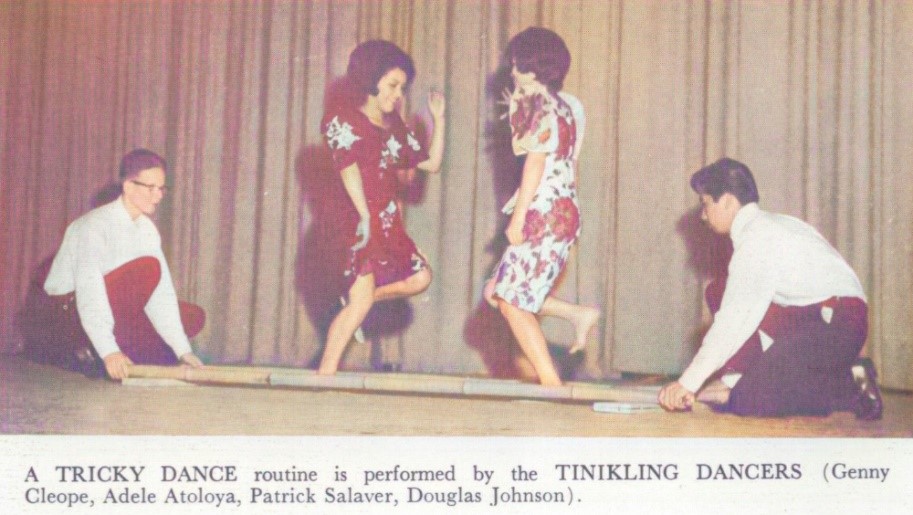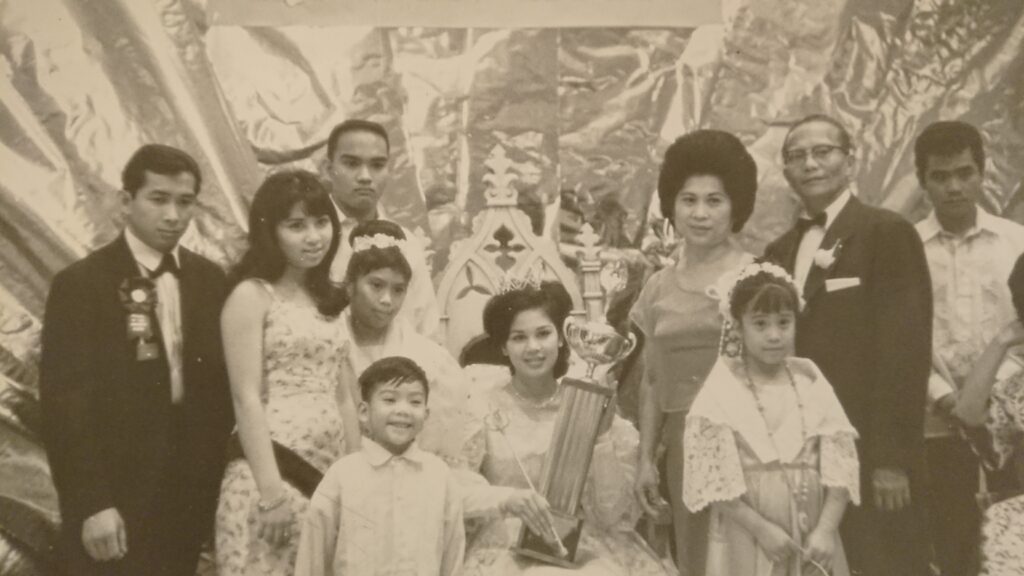Early 1965, with encouragement from visiting relatives, Estrella decided to send her children to the Philippines to learn about its culture, of which they had little knowledge. Initially, Estrella encouraged Pat to visit the Philippines to increase his knowledge of the culture which was more hers than his. Pat did consider it, but the Vietnam War required that he remain in school to maintain his student deferment. Instead, Dorothy was sent to study at Silliman University, Estrella’s alma mater, and stayed in the Philippines for five years. Estrella would share much of her culture with Pat through stories she experienced, as well as her family traditions and history.

Many of the SF State Filipino students were international students and Patrick believed that they could bridge the gap that he lacked regarding Philippine culture just as Estrella did in the community. Pat is credited for his leadership of PACE in developing tutoring programs in Bernal Heights and Central City, which is now known as South of Market (SOMA). Pat received much of his inspiration and motivation from the work of his mother, Estrella, who was a Music Director in churches in San Francisco and led Philippine culture presentations in the San Francisco Bay Area. She was the first Filipina organist in the United States when in 1957, she joined Pedro Liban, Music Director, at Wesley Methodist Church (aka Filipino Methodist Church) to accompany the all-Filipino choir. In 1958, she would become the first Filipina music director in the United States and lead music activities of the Filipino singers and the choir in performances throughout the City of San Francisco.
This was not Estrella’s first time as an organizer though. In January 1942 her senior year was interrupted by the invasion of the Japanese. She was forced to leave campus and flee with Dr. Santiago Calo and his wife Maria de la Paz Macute, sister of Manuela Regalado Macute, and other families to Palinpinion, where the rest of the Americans, a few faculty and other students who could not go home assembled to evacuate to the mountains. At this time, all the coastal towns were under Japanese control.
About the same time, the Japanese also invaded Dipolog City in northern Mindanao where they confiscated the Echavez family home and the family escaped to the jungle where they remained until the Battle of Mindanao. Estrella eventually returned to Dipolog where she remained and would organize the underground resistance against the Japanese. In January and February 1945, the underground resistance seized the Dipolog airstrip while surrounded by the Japanese. When the American troops started landing in the Philippines, she organized the USO in Dipolog City, where troops were flown from Australia to build landing strips before the big invasion in Leyte. She and ladies from the leading families of Dipolog City organized social and church activities for the troops. This boosted morale and lessened home sickness for the GIs. Marine pilots flew out of Dipolog to carry out bombing in Zamboanga City 150 miles away.
On March 8, 1945, two reinforced companies of the 21st Infantry, 24th Division flew into Dipolog to reinforce the defense of the airfield initially and then to provide blocking forces in the north for the invasion force that landed at Zamboanga City on March 10th. It was in that same month that Estrella married lieutenant Alvin Reyes Gubisch who was introduced to her by Dr. Calo. Alvin and Santiago were stationed in the same headquarters unit in support of the Battle of Mindanao.

At Wesley, she and her husband, Canuto, with Jack Liban led entertainment performances by Filipino singers and musicians. In addition to leading religious services and community festivals throughout San Francisco and the Peninsula, Estrella taught private piano lessons at the homes of her students. Influenced by her commitment to build awareness of Filipino culture, when he was a teen Pat presented the tinikling (a traditional Philippine folk dance) at Balboa High School.
Under the guidance of their mother, Pat and sister, Dorothy, and their friends, Jenny and Frankie Cleope, also brought the traditional Filipino dance to the Ben Alexander Talent Show, a local television program which aired in the Bay Area. The performance won the hearts of viewers who voted them their top choice, garnering the Salaver/Cleope dance team first prize.

Estrella supported the striking Filipino farmers and would bring donations of food to the workers in Delano, at times bringing her children to help distribute the donated food where they witnessed the abhorrent working and living conditions of the Filipinos. To thank her for her support, the farmworkers would give her boxes of grapes. Pat began learning about his Filipino roots after his family took a memorable trip to Delano to visit an uncle. His name was Larry Itliong and he was the leader of the first grape strike. Pat remembered that this visit was the first day of the grape strike, September 8, 1965. It also happened to be Estrella’s 45th birthday. Their Uncle Larry took Pat around to the various farms and Pat bore witness to the substandard living conditions that existed. Uncle Larry explained why the farmworkers needed to strike and Pat decided to support their cause. Pat would organize grape boycotts and picket lines at supermarkets in support of the workers who were seeking change. Pat became keenly aware of the low socioeconomic place in which Filipinos were placed in America. The Filipino strikers encouraged Mexican farmworkers led by the charismatic Cesar Chavez to join the strike which they did after some persuasion. The strike included marches, hunger strikes and a nationwide grape boycott by millions of Americans. In 1970, after a long five-year strike, improved conditions came about with the signing of the United Farm Workers agreement with the grape owners.

Estrella would also lead the San Francisco-based Philippine American Cultural Foundation whose specific purpose was to promote social and cultural awareness in the community and produce programs and performances. Estrella’s first job in the US would be as secretary for the Northern California-Nevada Council of Churches. She would also become Secretary for the Presbyterian-based SF Council of Churches.
Estrella was a versatile organist and classical pianist. She led choirs at Wesley Methodist Church (also known as the Filipino Methodist Church), Stewart Memorial Presbyterian Church and Trinity Presbyterian Church. The extensive cultural and church work that Estrella performed since arriving in the US in 1953 would culminate in 1964 with the acceptance of the Salaver family into the Filipino social scene by the coronation of Pat’s sister, Dorothy as First Princess celebrating Rizal Day. Two years later, his other sister, Edna, was crowned Rizal Day Queen.

Estrella’s leaning toward the Presbyterian Church was due to Isabelo’s rebellion against the Catholic church in Dipolog. He had a major disagreement with the Catholic establishment and decided to convert to Presbyterianism. His defiance was so strong that he built the Presbyterian church across the street from the Catholic church and had both Echavez and Macute sides of the family join him.
Estrella along with her siblings (and daughter Dorothy in 1965) would also attend Silliman Institute in Dumaguete, Negros Oriental, Philippines, which was established in 1901 by the Presbyterian Board of Foreign Missions. It was the first American institution of higher learning in the Philippines and the entire Asian continent. Estrella graduated Valedictorian in 1942.
In the early 1950’s Estrella would become a teacher at West Negros College in Bacolod, Negros Occidental, Philippines.
During tax time she leased an office and did other people’s taxes. There were times she would be organist for two to three different churches and would go from one church service to the other service every Sunday. She was actively involved with the San Francisco Council of Churches where she was elected to three 3-year terms. In the summer of 1968, PACE received an inner-city council grant to provide tutoring support to Filipinos in the Bernal Heights district. Estrella used her connections in the community to secure the grant. PACE occupied the second floor of the two -story building on Cortland Avenue and the first floor was occupied by the Bernal Heights Neighborhood Association. The student leaders held PACE meetings and tutored neighborhood children seeking to attend college, especially SF State. She would develop connections with the City and State through her founding and leadership of the Philippine-American Cultural Foundation which produced Filipino cultural festivals and events throughout the City, including the International Dance Festival. During the 70’s and 80’s, she devoted herself to weekly bible studies and played organ and piano for San Francisco and Los Angeles churches.
Estrella is remembered for her many efforts to improve the lives of those in the Filipino American community including getting the first grant in San Francisco to work with the Filipino aging community in the South of Market (SOMA) in the 1960’s. She was very involved in the St. Patrick’s Community Center helping disadvantaged Filipino. She also worked with then State Congressman Willie Brown to pass legislation that allowed foreign certified dentists and medical doctors to practice in California. In 1969, as a member of the San Francisco Council of Churches, she was a appointed to a task force to reduce gun violence by the SF Police Department.
In March 1970, she was the first Filipina honored in the United States for her service when Senator Milton Marks of the California State Senate recognized her for her volunteerism on behalf of not just the Filipino, but others in the Asian-American community. From gang members to medical professionals, Estrella worked tirelessly for the minority peoples in San Francisco to achieve a better life.
After she retired from the USPS in the mid 80’s, she earned a degree in Theology and founded her own church, Chapel of the Way, eventually settling in Florida, allowing her the time to travel not only to visit the holy lands, but to spread the Word of God as guest lecturer throughout the US. It was also at this time that she also became a Police Chaplain in Brevard County, Florida. Estrella died in Las Vegas, NV on August 23, 1999, after a short bout with cancer, surrounded by her family.